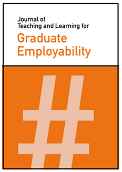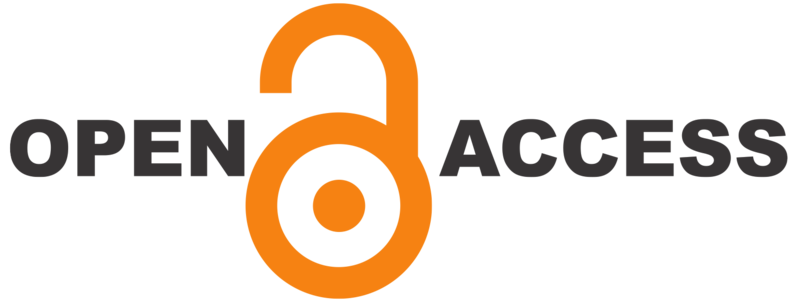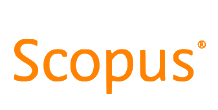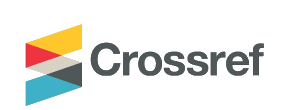The nexus of work integrated learning and skills among engineering students in Nigerian Universities: A structural equation model approach
DOI:
https://doi.org/10.21153/jtlge2024vol15no1art1824Abstract
Higher education providers have redefined their focus to include work-integrated learning (WIL) as an alternative way to prepare graduates for professional and future employment. Although WIL was designed to enhance graduates' work readiness, there is little evidence that the program supports the development of behavioural and employability competencies among participating students. Thus, this study aims to predict the effect of WIL through the partial least square path model on seven employability competencies. The sample consisted of 375 final-year engineering students from two Nigerian universities who had participated in a WIL program. A two-stage composite-based structural equation modelling was used to analyse the data. The average variance extracted and Heterotrait-Monotrait ratio were used to establish the validity and reliability of the instruments. A structural model was used to test the hypothetical constructs' relationship and level of significance. The findings supported all hypothesized direct relationships that WIL enhances graduate employability skills. The study concludes that WIL has immense benefits for students, including developing employability skills (i.e., Analytical, adaptability, communication, fundamental, ICT, interpersonal, and 4IR skillsets) for future employment. Consequently, it was recommended that higher education providers strengthen and establish frameworks for effective work-integrated learning program to enhance graduate employability.
Metrics
References
Adegbite, W. M. & Adeosun, O. T. (2021). Fourth industrial revolution skillsets and employability readiness for future job. Global journal of social science studies, 7(1), 35-49. https://doi.org/10.20448/807.7.1.35.49
Al-Alawneh, M. (2014). Measuring students' employability skills as they are perceived at Yarmouk University. Canadian Social Science, 10(1),10-20. https://doi.org/10.3968/j.css.1923669720141001.4023
Ahmad, W. A. W. & Noor, A. S. B. I. (2014). Communication skills and impact on the marketability of UKM graduate. International journal of higher education, 3(4), 64-71. https://doi.org/10.5430/ijhe.v3n4p64
Alibaygi, A. H., Barani, S., Karami, E., & Pouya, M. (2013). Employability determinants of senior agricultural students in Iran. Journal of Agricultural Science and Technology, 15(4), 673-683.. https://dorl.net/dor/20.1001.1.16807073.2013.15.4.7.0
Ayoubi, R. M., Alzarif, K., & Khalifa, B. (2017). The employability skills of business graduates in Syria: Do policymakers and employers speak the same language? Education + Training, 59(1), 61–75. https://doi.org/10.1108/ET-10-2015-0094
Barclay, D., Thompson, R., & Higgins, C. (1995), The Partial Least Squares (PLS) approach to causal modeling: Personal computer use as an illustration. Technology Studies, 2 (2), 85–309.
Bharathi, A. V. (2016). Communication skills-core of employability skills: Issues and concern. Higher learning research communication, 6(4). https://doi.org/10.18870/hlrc.v6i4.358
Bhola, S. S., & Dhanawade, S. (2012). Higher education and employability- A review. Pravara Management Review, 11(1), https://ssrn.com/abstract=2222597
Bowers-Brown, T. & Harvey, L. (2004). Are there too many graduates in the UK?’ Industry and Higher Education, 18(4), 243–254. https://doi.org/10.5367/0000000041667538
Briant, S. & Crowther, P. (2020). Reimagining internship through online experience: multi-disciplinary engagement for creative industries students. International Journal of work-integrated learning, 21(5), 617-628. https://www.ijwil.org/files/IJWIL_21_5_617_628.pdf
Chin, W. W. (2010). How to write up and report PLS analyses. In V. E. Vinzi, W. W. Chin, J. Henseler, & H. Wang (Eds.), Handbook of partial least squares: Concepts, methods and applications: Vol. 2. Springer handbooks of computational statistics series (pp. 655– 690). https://doi.org/10.1007/978-3-540-32827-8_29
Coll, R. K., & Zegwaard, K. E. (2006). Perceptions of desirable graduate competencies for science and technology new graduates. Research in Science and Technological Education, 24(1), 29-58. https://doi.org/10.1080/02635140500485340
Co-operative Education and Work-Integrated Leaning Canada. (2019). What is WIL? Work-Integrated Learning (WIL) Definitions. https://www.cewilcanada.ca/_Library/2019/WIL-Def-ENGLISH_-_Updated_2019.pdf
Crawford, A., Weber, M. R., & Lee, J. (2020). Using a grounded theory approach to understand the process of teaching soft skills on the job so to apply it in the hospitality classroom. Journal of Hospitality, Leisure, Sports and Tourism Education, 26, 1-11. https://doi.org/10.1016/j.jhlste.2020.10023
Deaconu, A., Osoian, C., Zaharie M, et al., (2014) Competencies in higher education system: an empirical analysis of employers' perceptions. Amfiteatru Economic, 16(37), 857–873. http://hdl.handle.net/10419/168862
Fazriyah, N., Supriyati, Y. & Rahayu, W. (2017). The effect of integrated learning model and critical thinking skills of science learning outcomes. Journal of Physics Conference, 812, (012014), 1–5. https://doi.org/10.1088/1742-6596/812/1/012014
Fenta, H. M., Asnakew, Z. S., Debele, P. K., Nigatu, S. T., & Muhaba, A. M. (2019). Analysis of supply-side factors influencing employability of new graduates: A tracer study of Bahir Dar University graduates. Journal of Teaching and Learning for Graduate Employability, 10(2), 67–85. https://doi.org/10.21153/jtlge2019vol10no2art801
Fleming, J., Martin, A.J., Hughes, H., & Zinn, C. (2009). Maximizing work integrated learning experiences through identifying graduate competencies for employability: a case study of sport studies in higher education. Asia‐Pacific Journal of Cooperative Education, 10(3), 189‐201 https://api.semanticscholar.org/CorpusID:204395453
Fornell, C., & Larcker, D.F. (1981). Evaluating structural equation models with unobservable variables and measurement error. Journal of Marketing Research, 18 (1), 39-50. https://doi.org/10.2307/3151312
Gold, A.; Malhotra, A. & Segars, A (2001). Knowledge management: An organisational capabilities perspective. Journal of Management. Information System. 18, 185–214. https://doi.org/10.1080/07421222.2001.11045669
Govender, C. M. & Adegbite, W. M. (2021). Effect of undergraduate student age on work-integrated learning preparation and experience. EUREKA: Social and Humanities, 5, 101-112. https://doi.org/10.21303/2504-5571.2021.002015.
Jackson, D. (2015). Employability skill development in work-integrated learning: Barriers and best practice. Studies in Higher Education, 40(2), 350-367. https://doi.org/10.1080/03075079.2013.842221
Jonck, P. & Minnaar, R. (2015). Validating an employer graduate-employability skills questionnaire in the faculty of management sciences. Mediteranean journal of social science, 6(2), 230-237. https://www.semanticscholar.org/reader/dbe6c5617f048dfafd668b10e639dba321d049a0
Hair Jr, J. F., Sarstedt, M., Hopkins, L., & Kuppelwieser, V. G. (2014). Partial least squares structural equation modelling (PLS-SEM). European Business Review, 26(2), 106-121. https://doi.org/10.1108/EBR-10-2013-0128
Hair, J. F., Hult, G. T. M., Ringle, C. M., & Sarstedt, M. (2017). A primer on partial least squares structural equation modelling (PLS-SEM) (2nd ed.). Thousand Oaks: Sage. https://us.sagepub.com/en-us/nam/a-primer-on-partial-least-squares-structural-equation-modeling-pls-sem/book244583
Hair, J. F., Ringle, C. M., & Sarstedt, M. (2012). Partial least squares: The better approach to structural equation modelling? Long Range Planning, 45(5–6), 312–319. https://doi.org/10.1016/j.lrp.2012.09.011
Hair, J. F., Hult, G. T. M., Ringle, C. & Sarstedt, M.A. (2016). Primer on Partial Least Squares Structural Equation Modeling (PLS-SEM). Thousand Oaks, CA: Sage Publications.
Harvey, L. (2000). New realities: The relationship between higher education and employment. Tertiary Education and Management, 6, 3-7. https://doi.org/10.1080/13583883.2000.9967007
Henseler, J., Ringle, C. M. & Sarstedt, M. (2016). A new criterion for assessing discriminant validity in variance-based structural equation modelling, Journal of Academic. Marketing Science, 43(1), 115–135. https://doi.org/10.1007/S11747-014-0403-8
Kay, J., Ferns, S., Russell, L., Smith, J., & Winchester-Seeto, T. (2019). The emerging future: Innovative models of work integrated learning. International Journal of Work Integrated Learning, 20(4), 401-413. https://api.semanticscholar.org/CorpusID:219957873
Kiong, T. P., Cheng, E. H., Pei, O. S., & Siew, H. K. (2019). Factors influencing employability of Chinese graduates in Malaysia upon returning to China. Proceeding of 3rd Asia International Multidisciplinary Conference, Pakistan, 4(1), 118–121. https://doi.org/10.31580/apss.v4i1.630
Kock, N. (2013). WarpPLS 4.0 User Manual. Loredo, Texas: ScriptWarp Systems.
Konstantinou, I. & Miller, E. (2020). Investigating work-integrated learning and its relevance to skills development in degree apprenticeships. Higher-Education, Skills and Work-Based Learning, 10 (5), 767-781. https://doi.org/10.1108/HESWBL-05-2020-0112
McKenzie, K., & Schweitzer, R (2010). Who succeeds at the university? Factors predicting academic performance in first-year Australian university students. Higher Education Research and Development., 20(1), 21–33. https://doi.org/10.1080/07924360120043621
Mason, G., Williams, G., & Cranmer, S. (2009). Employability skills initiatives in higher education: What effects do they have on graduate labor market outcomes? Education Economics, 17, 1–30. https://doi.org/10.1080/09645290802028315
National Centre for Vocational Education Research (2003). Defining generic skills: at a glance. https://www.ncver.edu.au/__data/assets/file/0020/4457/nr2102b.pdf
Oliver, B. (2015). Redefining graduate employability and work-integrated learning: Proposals for effective higher education in disrupted economies. Journal of Teaching and Learning for Graduate Employability, 6(1), 56-65. https://doi.org/10.21153/jtlge2015vol6no1art573
Peters, J., Sattler, P., & Kelland, J. (2014). Work-integrated learning in Ontario's postsecondary sector: The pathways of recent college and university graduates. Toronto, Canada: Higher Education Quality Council of Ontario.
Pheko, M. M., & Molefhe, K. (2017). Addressing employability challenges: a framework for improving the employability of graduates in Botswana. International Journal of Adolescence and Youth, 22(4), 455–469. https://psycnet.apa.org/doi/10.1080/02673843.2016.1234401
Pitan, O. S., & Atiku, S. O. (2017). Structural determinants of students' employability: Influence of career guidance activities. South African Journal of Education, 37(4). https://doi.org/10.15700/SAJE.V37N4A1424
Reddan, G. (2017). Enhancing employability of exercise science students. Asia-Pacific Journal of Cooperative Education, 18(1), 25-41. https://www.ijwil.org/files/APJCE_18_1_25_41.pdf
Rowe, A. D., & Zegwaard, K. E. (2017). Developing graduate employability skills and attributes: Curriculum enhancement through work-integrated Learning. Asia-Pacific Journal of Cooperative Education, Special Issue, 18(2), 87–99. https://www.ijwil.org/files/APJCE_18_2_87_99.pdf
Sampson, D., & Fytros, D. (2008). Competence models in technology-enhanced competence-based learning. In H. H. Adelsberger, Kinshuk, J. M. Pawlowski, & D. Sampson (Eds.), Handbook on Information Technologies for Education and Training (pp. 155–177). Heidelberg: Springer-Verlag. https://doi.org/10.1007/978-3-540-74155-8_9
Smith, M., Bell, K., Bennett, D., & McAlpine, A. (2018). Employability in a global context: Evolving policy and practice in employability, work integrated learning, and career development learning. Graduate Careers Australia. https://doi.org/10.6084/m9.figshare.6372506
Suarta, I. M., Suwintana, I. K., Sudhana, I. F. P., & Hariyanti, N. K. D. (2017), September). Employability skills required by the 21st century workplace: A literature review of labor market demand, Advances in Social Science, Education and Humanities Research, 102, 337 -341. https://doi.org/10.2991/ictvt-17.2017.58
Tomlinson, M. (2012). Graduate Employability: A Review of Conceptual and Empirical Themes. Higher Education Policy, 25, 407–431. https://doi.org/10.1057/hep.2011.26
Vailasseri, P., Long, J.M., Joordens, M. (2021). Embedding Bachelor of Engineering University Education with Enhanced Work-Integrated Learning. Educational Science, 11, 756. https://doi.org/10.3390/educsci11110756
Wold, H. (1982). Soft modeling: the basic design and some extensions. In K. G. Jöreskog & H. Wold (Eds.), Systems Under Indirect Observation: Causality, Structure, Prediction, Part 2, 1-54. North-Holland.
Yenew, A. M. (2019). Factors associated with women unemployment in Ethiopia. International Journal of theoretical and applied mathematics, 5(5), 68–73. https:// doi. org/ 10. 11648/j. ijtam. 20190 505. 11
Yang, H., Cheung, C., & Song, H. (2016). Enhancing the learning and employability of hospitality graduates in China. Journal of Hospitality, Leisure, Sport & Tourism Education, 19, 85–96. https://doi.org/10.1016/j.jhlste.2016.08.004
Young, K., Palmer, S., Binek, C., Tolson, M., & Campbell, M. (2019). Assessment-led reform: Creating a sustainable culture for WIL. Journal of Teaching and Learning for Graduate Employability, 10(1), 73–87. https://doi.org/10.21153/jtlge2019vol10no1art784
Downloads
Published
Issue
Section
License
Copyright (c) 2024 Waliu Mulero Adegbite, Professor Crystal Hoole

This work is licensed under a Creative Commons Attribution-NonCommercial 4.0 International License.












